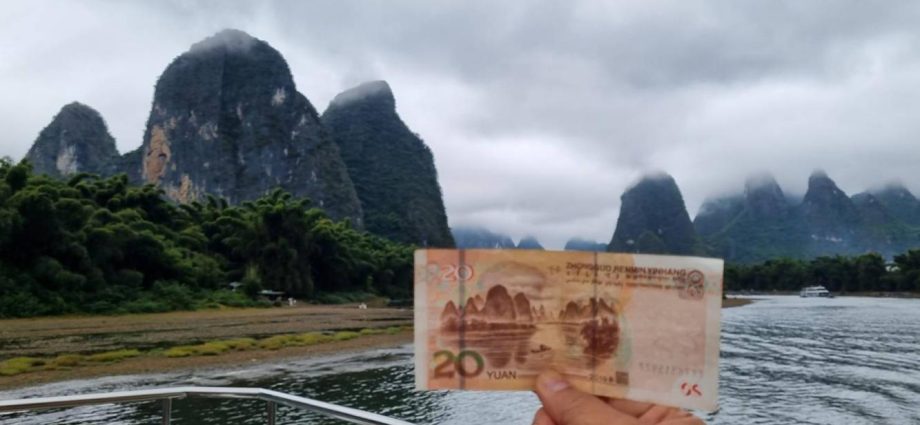
China is promoting Guanxi Zhuang Autonomous Region, which lies on the border with Vietnam, as a gateway to the mainland for businesses and tourists from the Asean region.
Guanxi’s location in southern China makes it well-suited to become a gateway to Southeast Asia. The region is connected to Vietnam by land, sea and air, and it is served by over 30 international cargo and passenger services which depart from its three international airports and three deep-sea ports.
Local authorities are hoping these facilities will attract more businesses and tourists from Southeast Asia to visit the region, and vice versa, according to Dong Changting, the deputy director of External Publicity and Exchange Department of Guangxi Zhuang Automomous Region.
Guangxi is also known for having one of the highest numbers of education institutions which provide Thai language courses to Chinese students.
A growing number of Chinese students are interested in taking up Thai lessons in Guangxi prior to leaving for Thailand. Similarly, a source said, an increasing number of Thais are also coming to Guangxi to learn Chinese.
The Chinese government is keen to facilitate language exchanges as it expands its reach in the region through its Belt and Road Initiative (BRI), the source said, noting such exchanges also boost the nation’s soft power capacity, which it needs to maintain its influence over its allies.
BRI is a major infrastructure push launched by the Chinese government, which Beijing envisions would ultimately link all major trade routes across Asia, Europe and Africa.
Prime location
Deputy Prime Minister and Commerce Minister, Phumtham Wechayachai, has said Guangxi’s location and proximity to Southeast Asia makes it an ideal gateway for Thai agricultural exports to China, such as jasmine rice, durian, grapefruit and longans.
The reason, he said, is because the autonomous region is well equipped to handle land and marine cargo shipments, allowing Thai products to reach the markets faster than if they had gone through a different gateway.
Recently, authorities in Guangxi Zhuang Autonomous Region hosted a China-Asean expo to boost cooperation between Chinese businesses and their Asean counterparts, in which they showcased the region’s rapid development and modernisation.
The trip was organised by the Propaganda Department of the Guangxi Zhuang Autonomous Region Committee of the Communist Party of China and the Guangxi Branch of China News Service.
Known for Guilin
Before Guangxi became a modern and popular trade hub, it was first known for its natural attractions, chief among which is Guilin, which is world-famous for its beguiling limestone karst formations.
The landscape around Guiling is so renowned that it is featured on the 20-yuan banknote, said Ma Tieqiao, chairman of Guilin Junda Transportation Company, which offers leisure cruises along the Li Jiang River.
In the past, he said, most tourists would have to get on bamboo rafts, which are only big enough for about three people, or risk getting crammed into a small boat for larger groups.
As the number of tourists continue to grow, in 1985 the Guilin Sightseeing Shipping Co was founded to provide improved services for local and international visitors.
The move proved to be successful and now scores of leisure boats cruise along the Li Jiang River everyday, he said.
Home to high-tech industry
Now, Guilin is increasingly becoming known as a hub for high-tech industries.
The rapid transformation started in 1988, when Guilin High-Tech Industrial Development Zone was established. It was upgraded into a high-tech special development zone in 1991, becoming the first national-level high-tech zone across China’s five autonomous regions.
In just 30 years, Guilin has become one of the leaders in scientific innovation and industrial development.
One example of a successful company based in the region is Guangxi Guilin Zhishen Information Technology Company, which produces anti-shake tripods for cameras and other equipment for digital photography, as well as mobile phones.
The company has won several awards such as the iF Design Award, the Red Dot Award and the Excellent Design Award, according to the company.
In addition, Guigang, which is located in eastern Guangxi, has been designated as a hub for electric vehicle (EV) manufacturers. The city is home to more than 100 EV-related businesses, including e-bike producers, machine components and vehicle parts manufacturers.
Having an EV production base in Guigang will give China more opportunities to export its EVs to countries in Southeast Asia, said a representative of Guangxi Luyuan Electric Vehicle Company, which manufactures and distributes electric motorbikes and e-bicycles.
He said as the electric vehicle industry has become more popular in the world, the company expects to expand its reach to many countries in Southeast Asia.
EVs will be a solution for the green energy ecosystem, he said.

The Sun and Moon Pagodas are illuminated at night in the Fir Lake, one of popular tourism sites in Guilin. Photos by Penchan Charoensuthipan

